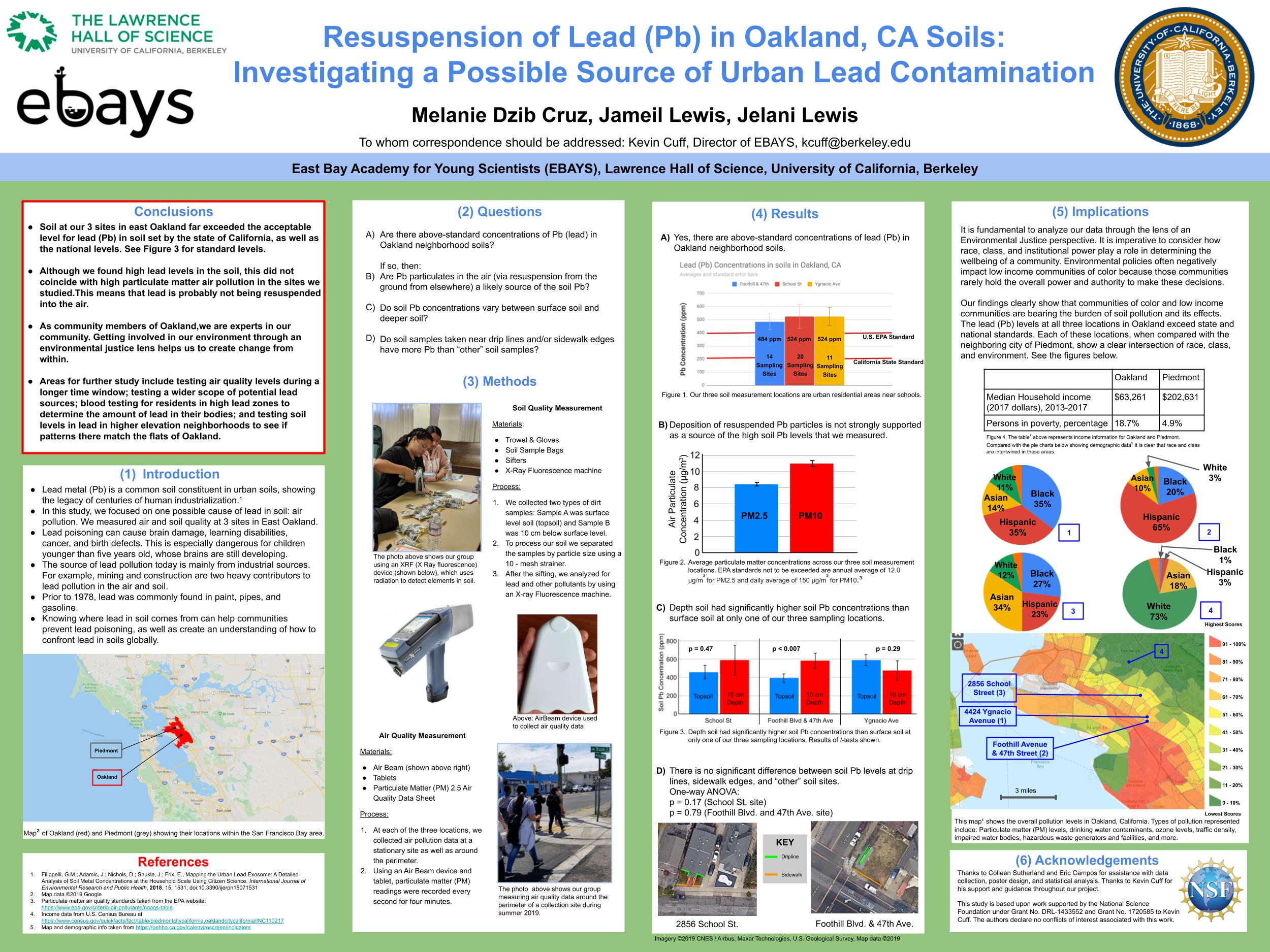Resuspension of Lead (Pb) in Oakland, CA Soils
Investigating a Possible Source of Urban Lead Contamination Research by: Melanie Dzib Cruz, Jameil Lewis, Jelani Lewis

Accepted Abstract
Prior research indicates that millions of tons of lead (Pb) formerly used in lead-based paints and leaded gasoline are still present in urbanized surface environments. Despite largely effective efforts to reduce lead sources, the presence of high lead concentration levels in urban soils is not uncommon. Previous studies conducted in the San Francisco Bay Area by members of the East Bay Academy for Young Scientists (EBAYS) research team have revealed the presence of extremely high lead concentrations in soils collected in the cities of Oakland, Richmond and Emeryville, CA. For example, soils in several sections of Oakland were found to contain soil Pb concentrations that far exceed both State of California and U.S. Environmental Protection Agency action levels (80 and 400 ppm, respectively).
In an attempt to investigate the role that resuspension may play in the production of highly Pb-enriched soils in the East Bay San Francisco Bay Area, this study focuses on examining the relationship between lead concentrations in soil and particulate matter (PM) concentration levels in air at numerous sites located throughout Oakland. Given Its proximity to large freeways, the occurrence of extremely old homes (potentially leaching lead into the soil from old paint and pipes), as well as its status as one of the top 10% of polluted zip codes in the state of California,[1]Oakland presents itself as an ideal site for such a study. In conducting this study, soil was collected from sites where samples with lead concentration levels above 400 ppm had been collected previously by EBAYS researchers. These sites then became the center of survey areas within which soil samples were systematically collected and PM concentration measurements were made. By collecting both PM and soil lead data at one time, the team sought to create a “lead pollution snapshot” of a given location. In each survey area soil samples were collected and separated into three different grain size fractions using standard sieves and later analyzed using a portable X-Ray Fluorescence Analyzer. Also, PM 1, 2.5, and 10 concentration levels were measured throughout a given survey area using an AirBeam PM analyzer. Preliminary analysis of data collected thus far has enabled the research team to correlate locations with soils that contain high levels of lead with areas where high concentrations of PM 1, and 2.5 exist.
[1]Cal Enviro Screen. Government of the State of California. October 1, 2013. https://oehha.ca.gov/calenviroscreen/report/calenviroscreen-30.

